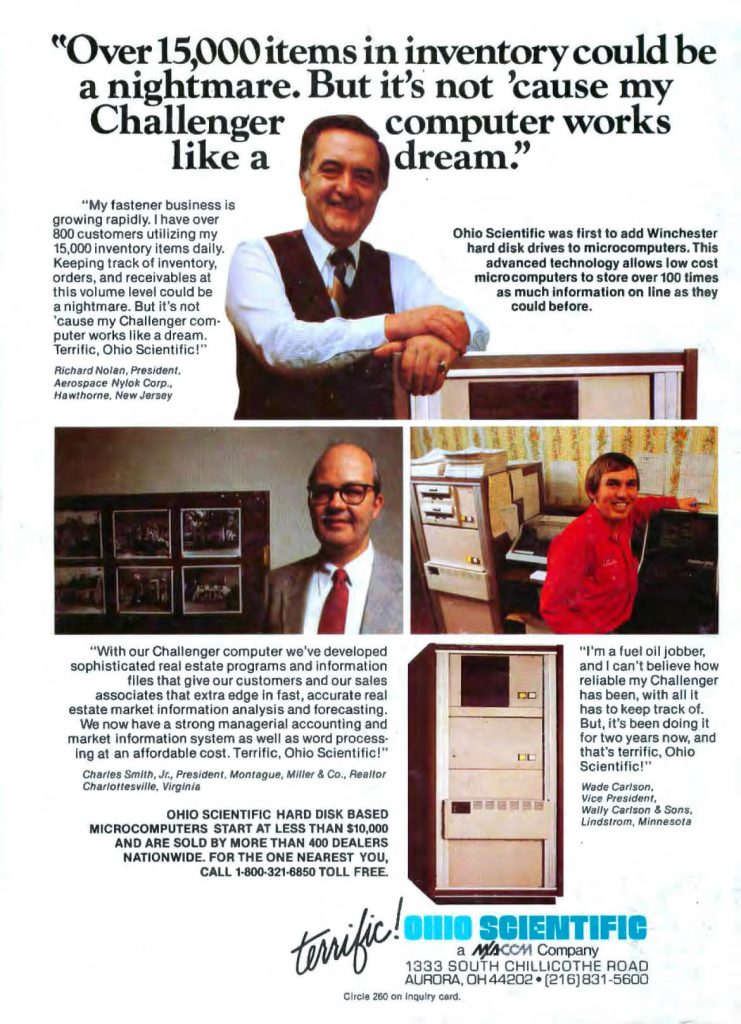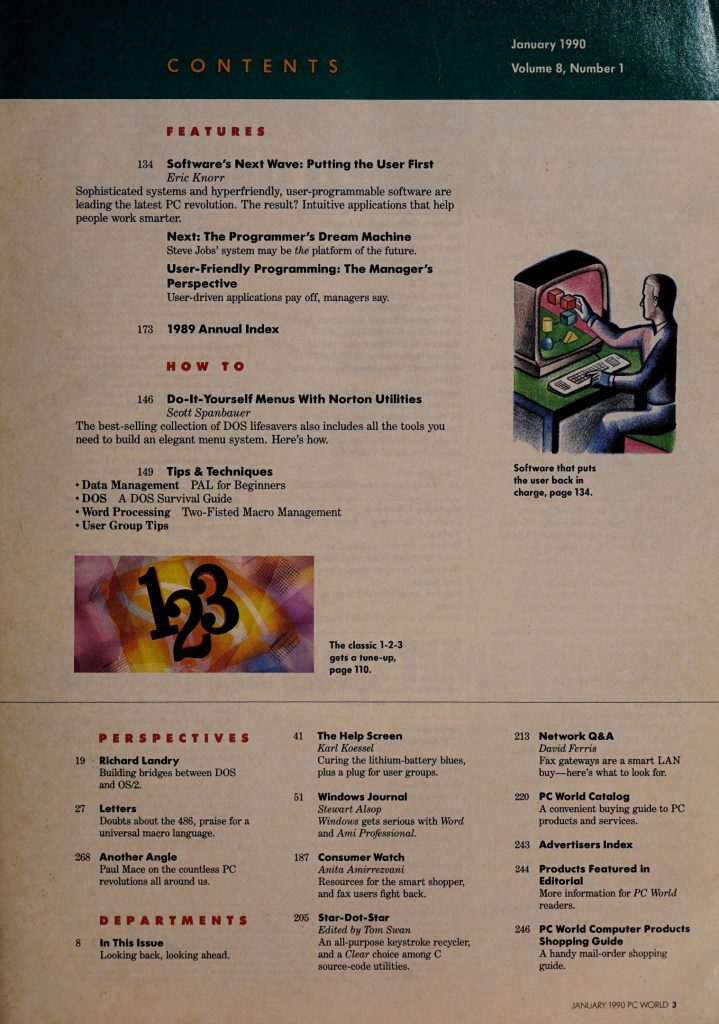
Source: Byte – September 1981
The IBM PC was introduced around the same time this issue of Byte was on the stands. If you had a personal computer at the time, it was most likely an Atari, Apple II, Commodore, TRS-80 or something built from a kit. Byte also covered what were called “small systems”. I guess you could think of those as the rough equivalent of workstations for a business environment. The September 1981 issue of Byte includes:
Features
- A Look at NCC ’81 – The 1981 National Computer Conference held in Chicago May 4th-May 7th. Some of the many things seen there include the BMC IF-800 microcomputer, LEX-21 portable terminal, the Corvus Omninet, BASF’s slimline 5.25-inch flopy-disk drives, The TRS-80 Color Computer, The Xerox Star, the Sony Typecorder, a half-width 8-inch floppy drive from Tandon and much more.
- Build an Unlimited-Vocabulary Speech Synthesizer – A guide for building your own speech synthesizer.
- The Xerox Alto Computer – Xerox designed the Alto as a development tool for Xerox. However, they also donated 50 machines to various educational institutions for research. It consists of a vertically oriented graphics display, a mouse which was a Xerox innovation, two 3MB hard drives, and a “processor” composed of medium- and small-scale TTL integrated circuits. One would set you back about $32,000 in 1981 dollars.
- Tree Searching, Part 1: Basic Techniques – Techniques for searching trees, e.g. the traveling-salesman problem of finding the shortest route through multiple cities.
- One Step Forward – Three Steps Backup, Computing In the US Space Program – Space rating computers often means they are obsolete before they fly. Some of the testing includes repeated heating and cooling from +50 Celsius to -50 Celsius, mechanical shocks, electromagnetic interference, radiation, withstand up to 30G, intensive use for several years without any failures, etc. This article goes into more detail on the requirements for different types of space missions (near earth orbit, manned, planetary), space-rating microprocessors, tasks such computer perform, and much more.
- Artificial Intelligence – As you can see, AI is hardly a new topic. This article focuses on using AI to organize vast amounts of data.
- A High-Level Language Benchmark – A variation of the Sieve of Eratosthenes algorithm that can be easily implemented in a variety of languages to test performance.
- Science Fiction’s Intelligent Computers – A look at the computers of tomorrow as imagined in sci-fi novels.
- Symbolic Differentiation via LISP – Using LISP in symbolic mathematics. The author created his on LISP interpreter on the TRS-80 Model I.
- Knowledge-Based Expert Systems – A look at knowledge-based expert systems and how they work. Includes a demo in BASIC for personal computers.
- The Atari Tutorial, Part 1: The Display List – The first in a series of articles on the technical capabilities of Atari computers adapted from the forthcoming book, De Re Atari. This part focuses on the graphical capabilities of the Atari.
- Natural-Language Processing, The Field Perspective – A look at what it takes to create a computer that can communicate like a human.
- The Emperor’s Old Clothes – A transcript of Professor Hoare’s 1980 Turing Award Lecture. Professor Hoare made many important contributions to computer science including the development of Quicksort, various advanced data structuring techniques, work in axiomatic semantics, and much more.

Reviews
- The Big Board: A Z80 System in Kit – The Big Board is a single board computer manufactured by Digital Research that includes 64K RAM, 24-line by 80-character video generator, keyboard interface, room for four 2K ROMs, and a floppy controller with options for parallel and serial ports and an on-board timer. This board cost $650. For an extra $50 they would solder the sockets for you. Then you just have to provide your own disk drive, cabinet/case, power supply, keyboard and monitor. A custom version of CP/M 2.2 was also available for it.
- Misosys Software’s DISKMOD – A utlity that will conver Radio Shack’s cassette based editor/assembler for the TRS-80 Model I into a disk based version.
- MINCE – A text editor for the 8080 family of computers and CP/M.
- BYTE’s Arcade: Big Five Software – A look at three games from Big Five Software for the TRS-80 Model I/III including Attack Force, Cosmic Fighter, and Galaxy Invasion. Plus a review of The Prisoner, a graphics adventure game based on the TV series of the same name for the Apple II.
- Three Microcomputer LISPs – A look at three different LISP packages including mLISP/mSTAR-80 for 8080/Z80 machines running CP/M, (T.(L.C)) LISP version 1.07 for Z-80 based computers running CP/M, and Cromenco LISP version 1.06 for Z-80 based computers running Cromenco’s CDOS or Cromix.
- Interactive Fiction: Six Micro Stories – A title from Adventure International that includes six mini text adventure games.
Nucleus
- Letters – Letters from readers regarding MIT Apple Logo, software piracy, programming compared to essay writing, a defense of Vikings, and more.
- Book Reviews – A review of Principles of Artificial Intelligence by Nils J Nilsson.
- Programming Quickies – A demonstration of changing a FOR…NEXT loop into a REPEAT…UNTIL loop.
- BYTELINES – Tandy plans to double its hardware and software products within the next six months, Zilog to introduce and enhanced Z80 called the Z800, Commodore introduces 6508 processor, Sony starts providing OEMs with samples of its new 3.5-inch “microfloppy” disk drives, and more.
- Ask BYTE – Questions answered about the safety of double-siding floppy disks, developing a proximity warning system for cars, expanding memory on Atari 400 and Atari 800 computers, and more.
- BYTE’s Bits – Info about a new publisher for The Apple Shoppe Magazine, Microsoft stops work on APL interpreter, and more.
- Technical Forum – The pitfalls of using computers for record keeping as it relates to the IRS, a technique for comparing two signals on an oscilloscope, and how to build an inexpensive cassette level indicator.
- System Notes – A program listing for a Z80 memory test program.
- What’s New? – The Stratos 4 MHz Z80 based computer, the Rair Microcomputer Black Box 3/30 (5 MB hard drive + floppy drive), the K-8073 single board computer, The LNW80 computer compatible with the TRS-80, the Xerox 820 microcomputer, the Sierra 4000 S-100, Z80-based computer, and more.

…and more!









